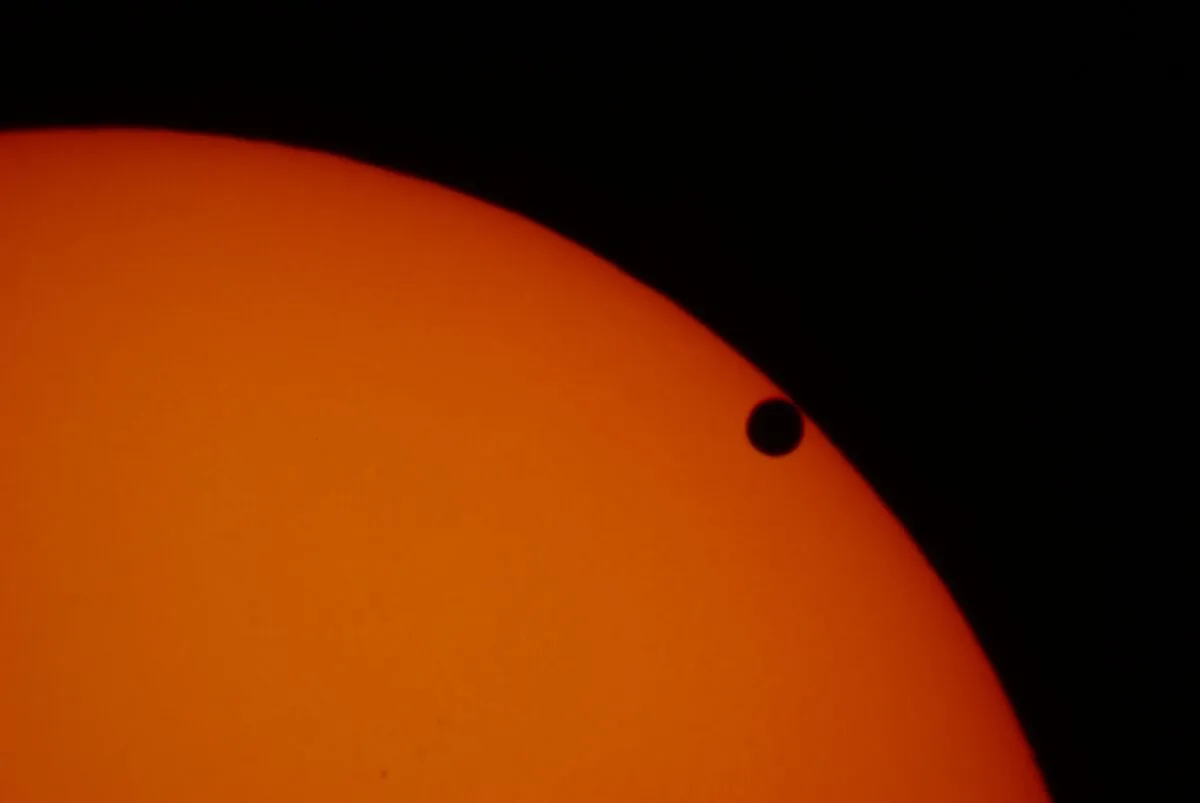While orbiting their parent star(s), planets can sometimes cross the line of sight between the star and Earth.
When they do, they produce a ‘transit’ that we can detect.
You may have seen in this in our own Solar System, if you've ever witnessed a transit of Mercury or a transit of Venus.

Eclipsing star systems are similar. Instead of a planet, a star moves in front of another star, blocking some of its light.
Triply eclipsing three-star systems consist of three stars orbiting a common gravitational centre. Two stars closely orbit one another, and both orbit a more distant third star.
Sometimes, from Earth we can detect three sets of eclipses from these systems.
Many stars are gravitationally locked inside multi-star systems, but a rare triple-star system has set a new record for how cosy these clusters can get.
Veselin Kostov is a research scientist at the Search for Extraterrestrial Intelligence (SETI) Institute, working on the discovery and characterisation of exoplanets and multiple-star systems.
We spoke to him about the discovery of a three-star system called TIC 290061484.

What did your study discover?
We discovered a triply eclipsing three-star system called TIC 290061484, consisting of a pair of inner stars orbiting one another in about 1.8 days and a third star in a wider orbit of around 24.5 days.
It’s the shortest known orbit in a triple system, by far.
The previous record-holder, Lambda Tauri, was discovered over 60 years ago and had an outer orbit of 33 days.
Since then, many people have looked for even shorter outer periods.
Now we’ve found TIC 290061484, the question remains: what is the shortest orbit possible in such
a system?
Physics tells us that a binary star system with a one-day period can have a companion third star with an outer period of 10 days.
Only a very small fraction of triple-star systems are eclipsing, because they need to be in the correct orientation to Earth for the stars to move in front of one another along our line of sight, so the chance of finding one is tiny.

How did you discover TIC 290061484?
In several stages.
The first stage relied on machine learning to examine all the available data taken by the Transiting Exoplanet Survey Satellite (TESS).
The ‘robots’ sift through tens of millions of stars and tag hundreds of thousands of potential eclipsing two-star systems.
These are sent to a team of trained citizen scientists who visually inspect the data for signs of additional eclipses and other unexpected phenomena.
Humans are exceptionally good at quickly and reliably identifying these!
Our team then makes detailed simulation models to confirm the system is what we think it is.
How does the TESS mission help?
TESS (Transiting Exoplanet Survey Satellite) is a survey mission that observes the entire sky in slices.
It’s designed to find transiting exoplanets, but it’s also an excellent detector of variable astrophysical sources such as Solar System asteroids, eclipsing binaries, supernovae and active galaxies.
This makes TESS data ideally suited for detecting multiple-eclipsing star systems.
How did citizen scientists help?
A Zooniverse group called the Visual Survey Group has worked together for more than a decade to examine data from each star system visually.
The data is called a light curve, which shows how the brightness of a star changes with time.
Roughly speaking, sudden dips in the light curve can indicate an eclipse, and this is what the Visual Survey group looks for.
Since they began working together, they’ve inspected tens of millions of light curves from Kepler, K2 and TESS.
Why are triple-star systems important?
Studying triple-star systems gives us a better idea of how such compact systems can form.
We have no definitive answers, but modelling such triple systems gives us the opportunity to conceptualise different formation and evolution pathways.
For example, in TIC 290061484, all the stars are quite massive and will evolve rather quickly.
We expect that in about 20 million years the system will explode as a supernova, seeding the Galaxy with heavy elements and leaving behind a single neutron star.

What’s next for your team?
Beat our own record!
We’re already planning for the next satellite mission, the upcoming Roman Space Telescope, which could enable the detection of even shorter-period triple stars.
We will also be looking for other interesting systems, not just triples but higher-order star systems with four, five, six or even more sets of eclipses.
This interview appeared in the February 2025 issue of BBC Sky at Night Magazine
